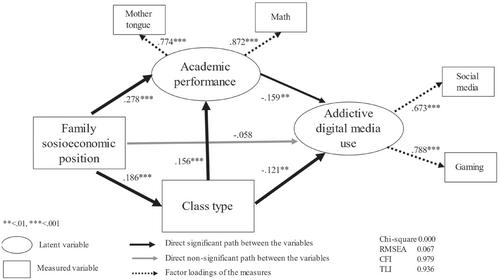Selective Classes and Early Health Inequalities in Comprehensive Schools in Finland
Abstract
BACKGROUND
The origin of inequalities in health outcomes has been explained by health selection and social causation models. Health selection processes operate particularly at school age. We study, if student allocation to teaching groups with aptitude tests (selective vs general class) differentiates adolescents by health behaviors and mental health.
METHODS
Finnish schoolchildren 12-13 years from 12 selective classes, n = 248; 41 general classes, n = 703 answered a questionnaire on addictive products (tobacco, snus, alcohol, and energy drinks), digital media use, and mental health (health complaints, anxiety, and depression). Structural equation modeling was conducted to identify structures between outcomes, SEP (socioeconomic position), class type, and academic performance.
RESULTS
Students in the selective classes reported less addictive digital media and addictive products use than students in the general classes. Differences in academic performance or SEP between the class types did not solely explain these differences. Mental health was not related to the class type. SEP was indirectly associated with health behaviors via the class type and academic performance.
CONCLUSIONS
Selecting students to permanent teaching groups with aptitude tests differentiates students according to risky health behaviors. The impact of education policies using student grouping should also be evaluated in terms of students' health.


 求助内容:
求助内容: 应助结果提醒方式:
应助结果提醒方式:


